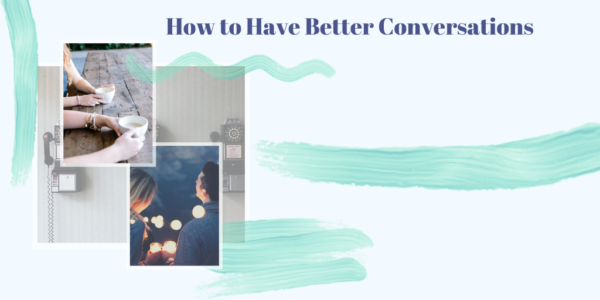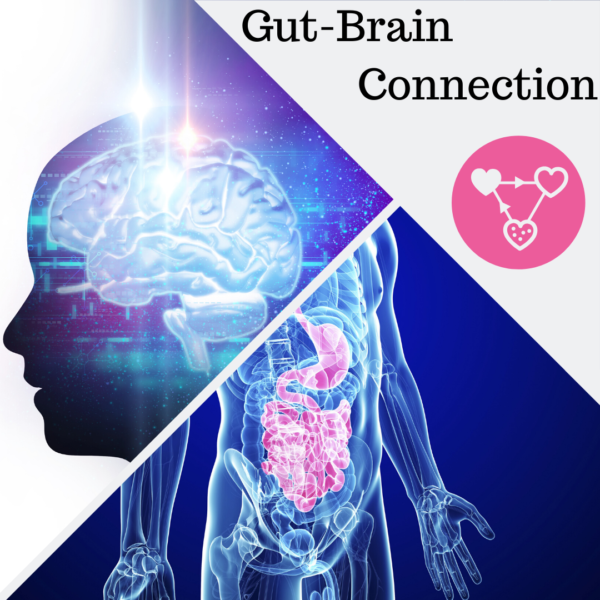
Each day we interact with friends, family, and many other people. During these interactions we often strive to make meaningful connections. There are so many ways we can connect, and one is the most prominent: talking with each other. We at Unified Caring Association (UCA) have recently seen a wonderful TedTalk by Celeste Headlee about 10 Ways to Have a Better Conversation. This is a wonderful speech that helps us understand different ways to connect with others through conversation.
The World We Live In
Celeste begins her speech talking about the shift in how we hold conversations with each other due to the integration of technology. Many people spend most of their time communicating through emails and texts. Celeste makes a good point: this world we live in has great potential but can quickly devolve into arguments. Think about how a text that is misread triggers us to feel a wide range of negative emotions. This communication trend is especially prominent in children and teens. “Pew Research did a study of 10,000 American adults, and they found that at this moment, we are more polarized, we are more divided, than we ever have been in history. We’re less likely to compromise, which means we’re not listening to each other. And we make decisions … based on what we already believe.” If we are not holding balanced conversations and listening to each other, we are losing out.
A VIP Skill-Communication
A high school teacher, named Paul Barnwell, gave his students a communication project to teach them how to speak on a specific topic without notes. It became apparent that conversational competence might be one of the most underdeveloped skills for students. This difficulty is partly due to kids spending hours each day engaging with ideas and each other through screens. Rarely do these kids have an opportunity to develop interpersonal communications skills. Barnwell asks, “Is there any 21st-century skill more important than being able to sustain coherent, confident conversation?”
How to Have a Great Conversation
Most of us have an idea of how to actively listen and participate in a conversation. Some of these tips are: look the person in the eye, think of interesting topics before you meet, smile, and repeat back a summary of what you heard for further clarification. Celeste Headlee argues that we should forget all or most of this in an effort to have not just good conversations, but great conversations. We all have had interactions that we walk away from craving more. This drive to have a longer interaction is a sign of a great conversation. These connections allow us to feel engaged and inspired, and that we are perfectly understood.Headlee has ten great tips to achieve this result almost every time you hold a conversation.
Right off the get-go, Headlee hits the ground running! We all should avoid multitasking. Juggling your “to-do” list with the argument you had with your significant other three days ago while talking with your best friend is not devoting caring time with your best friend. When we do not multitask, we are present and in the moment with the person(s) we are having a conversation with.
Next, Celeste strongly recommends not pontificating. When we pontificate we become predictable and have a harder time keeping an open mind. “You need to enter every conversation assuming that you have something to learn.” This can mean setting aside your personal opinion for the time being, allowing the speaker to have room and encouragement to open up.

Thirdly, when asking questions, use open-ended questions. Part of this technique is psychological. When we have a strong word prompt, such as terrifying, we respond to it and formulate a comment that reflects the same intensity and mood. To hold a better conversation let the speaker identify the thought and feeling. “Let them describe it. They’re the ones that know. Try asking them things like, ‘What was that like?’ ‘How did that feel?’ Because then they might have to stop for a moment and think about it, and you’re going to get a much more interesting response.”
Number four: Try to let go or go with the flow. Thoughts will appear; even if these thoughts do not relate to the conversation, let them go out of your mind. Sometimes these thoughts are lists of groceries, or a really great question we DO want to ask the person we are talking with. The issue can be that we are not actually listening, and maybe that really great question was already answered.
Five: If you don’t know an answer, admit it, and move forward. This surrender to not knowing everything helps us become more relatable to the other person we are talking with. Also, it can help us build or maintain our credibility, and hopefully strengthen our relationships. So, say that you don’t know in an effort to err on the side of caution.
Next, is an important note to remember. We do not want to equate our experience with the other person’s. Each experience and feeling is unique to the person it pertains to. We can never feel exactly the same. Think about the proverb: You can never step in the same river twice. This is true because the water is constantly flowing, and therefore never the same in any spot. “More importantly, it is not about you. You don’t need to take that moment to prove how amazing you are or how much you’ve suffered.”

Number seven: Try our hardest to not repeat yourself. The repetition can become boring to the listener, and possible condescending. Take a moment during your next conversation to count how many times you repeat yourself, and you might realize that we tend to repeat ourselves a lot.
We are coming to the home stretch of Headlee’s list. Eighth in line is advice for many situations outside and inside of conversations: try to avoid using too many facts. Most people are less interested in how many years you did “such-and-such” or the names and dates of your 20 second cousins twice removed. What truly matters to others is the genuine you; what you are like and have in common.
Ninth in line is VIP: LISTEN. Most of us equate active listening with holding a great conversation, and truly listening takes many of the state steps into account. Many successful people believe and share that listening is perhaps the most important skill that you can develop. Headlee paraphrases Buddha with pizzazz. “If your mouth is open, you’re not learning.” Why is listening so hard when it is so important? Well, it can come down to controlling the conversation through talking, especially if we are afraid. There is an additional reason: We have short attention spans (a.k.a. we get distracted, easily). On average a person talks at a rate of about 225 words per minute. However, our brains can listen to 500+ words per minute. In the 275 gaps between we tend to fill in or lose focus on the conversation. As another example, think about how quickly we lose interest in a video on Facebook or YouTube? If the content doesn’t grab us within the first 20-30 seconds, we move on. It takes a great amount of energy and effort to pay attention to someone while holding a conversation with them. Otherwise, you are just shouting monologues that might overlap with each other.
Last but not least, number 10. Celeste Headlee keeps it simple as she shares a quote from her sister: Be brief. “A good conversation is like a miniskirt; short enough to retain interest, but long enough to cover the subject.”

What is the basic concept?
What is the common thread we find in all ten of Headlee’s tips? The answer: “Be interested in other people. …assuming everyone has some hidden, amazing thing about them.” We can be amazed at all our caring community has to offer when holding truly great conversations with each other. We encourage our caring community to share the caring by connecting through conversations. And remember, caring conversations with ourselves can be a form of self-care!













